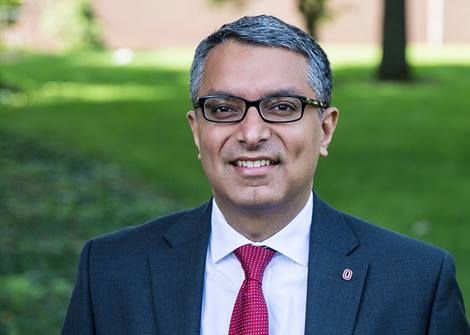When The Ohio State University Wexner Medical Center (OSUWMC) opened in 1834, physicians traveled to patients’ homes via horse and buggy to make house calls. More than 190 years later, OSUWMC is driving modern medical care back to the home, minus the horse and buggy.
Rachit Thariani is leading the medical system’s effort. As the newly appointed chief administrative officer of post-acute and home-based care, Thariani is helping OSUWMC move everything from wellness services to end-of-life care directly to where patients live.

“We are really well-positioned and we are right at the forefront of creating breakthrough solutions that have the potential to revolutionize health and well-being,” Thariani told McKnight’s Home Care Daily.
OSUWMC is located on the campus of Ohio State University in Columbus. It serves patients throughout central Ohio at seven hospitals and a network of ambulatory and outpatient facilities.
OSUWMC began the movement to home-based care a few years ago with the launch of a home medical equipment company and telehealth. But the acceleration to home picked up speed during the pandemic. In the last two months, OSUWMC has partnered with Kettering, OH-based Alternate Solutions Health Network and Denver-based DispatchHealth to deliver urgent, acute and chronic care services to the home. It also inked a deal with Teladoc to provide virtual care to patients with Type 2 diabetes. OSUWMC continues to consider a possible move to hospital-at-home.
For Thariani, the pandemic served to reinforce his belief that home is the future of healthcare.
“The pandemic’s an unfortunate event, but it’s also shown what is possible for us to be in the home and it’s also shown how accepting patients are about this,” Thariani said.”We are really in a very unique and dynamic healthcare environment now where there is a convergence of various factors that make home care so much more possible.”
OSUWMC has a unique advantage over other hospitals and healthcare providers. It is home to The Ohio State University’s College of Medicine and its schools of rehabilitation sciences, biomedical sciences and office of health sciences. The university also is home to various research centers, programs and institutes.
Thariani said those resources can help train physicians, nurses and other clinicians on care delivery to the home, while developing new technologies to advance home healthcare.
“As we build out and launch new models of care, we can partner with the research enterprise to study the efficacy of outcomes and so on,” Thariani explained.
Thariani believes new payment models and additional evidence that supports the efficacy of home-based care will be the primary drivers of more home healthcare. Still, he doesn’t think the home will completely supplant facility or office-based care.
“I think there will be segmentation. There are different things that can be taken care of at home and we’ll need to figure out what models do that. But we’ll still have to take care of patients in multiple settings,” Thariani said.




